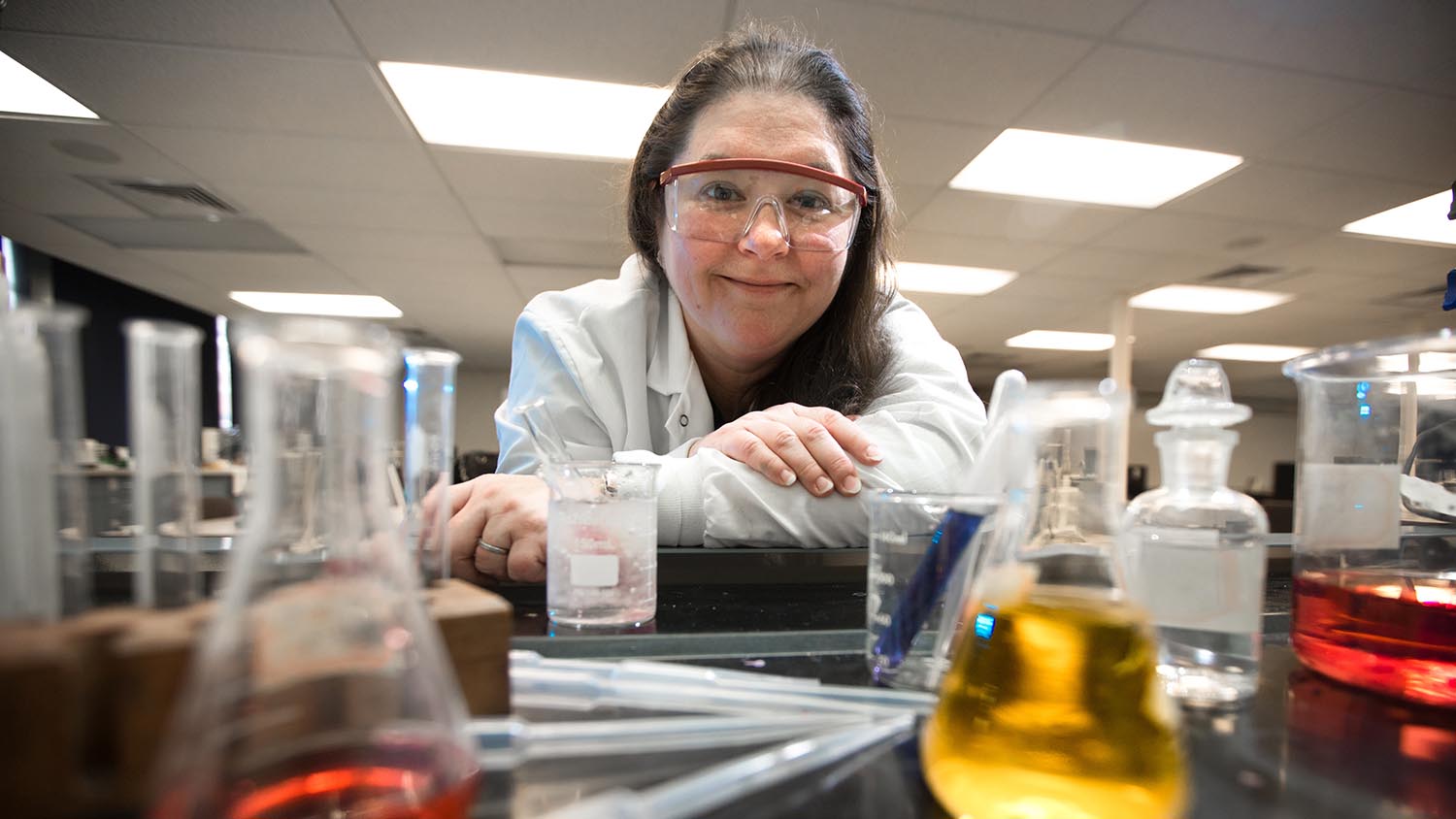California
What a Chemist Looks Like
Dr. Kimberly Woznack is a role model for women who are interested in STEM careers.

Female students at PennWest who aspire to careers in chemistry have a role model in Dr. Kimberly Woznack.
The professor in the Chemistry and Physics Department began teaching at PennWest California in 2004. For the past year, she has chaired the American Chemical Society’s Women’s Chemist Committee.
The committee’s mission is to attract, retain, develop, promote, and advocate for women to positively impact diversity, equity and inclusion in the society and the profession.
Woznack and Dr. Gregg Gould are co-advisers of PennWest California's student chapter of the American Chemist Society.
“The WCC hopes to remove the blinders as to what a chemist looks like,” said Woznack, who also collaborates with the ACS Diversity and Inclusion Board.
“If you ask a child to draw a chemist, they would draw a picture of someone who looks like Albert Einstein in a lab coat. They would not draw someone who may have a different skin color or be a different gender.
“We’re trying to give people opportunities, support and raise awareness and visibility.”
Thirty percent of ACS membership is female.
“I would not say women are a rarity, but we are still under-represented,” she said. “We would like to see the membership reflect the representation of women in the industry, which is still a bit below 50 percent.”
Woznack said women’s participation in chemistry has significantly improved at the undergraduate level, where the population nationwide is 50 percent.
Seniors Taylor Potts and Susan Renninger will accompany Woznack and Dr. Min Li to the ACS National Spring Conference, March 31-April 4 in Orlando, Fla.
The two students will present posters and accept an ACS Student Chapter honorable-mention award for their programs and activities. This is the chapter’s second honor in three years.
Potts praised Woznack as a mentor and role model.
“Dr. Woznack has been a huge inspiration to me and helped me tremendously over the last few years,” Potts said. “It's important that women chemists are recognized and treated with respect. She is a great professor and a great example of how it is absolutely possible to manage a career and family, as well as make connections with her students every day.”
In February, the chapter sponsored a breakfast to support female chemists.
“At the conference I can introduce our students to a larger chemistry network, which is something we can do here electronically but is obviously not the same,” Woznack said. “Events such as the breakfast educate and show people facts on women’s involvement, which they need to know.”
Woznack, a mother of two, has shared her experiences in Mom the Chemistry Professor. She was the lead editor for the book’s second edition and was a chapter author and co-editor of the first.
The book features 40 personal accounts of the challenges and rewards of combining motherhood with an academic career in chemistry. The book also contains a chapter on safety issues for pregnant or nursing women at academic institutions.
“We wanted to showcase success stories, because you don’t have to be afraid,” said Woznack. “I’m a professor and a mom, and it works. Nobody’s life anywhere is perfect, but it can be very rewarding and incredible.”